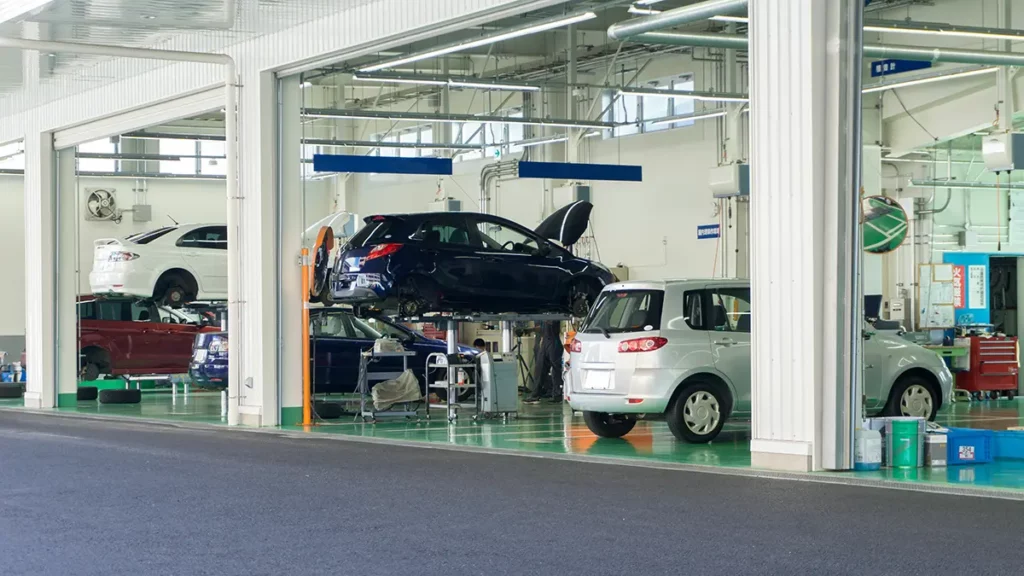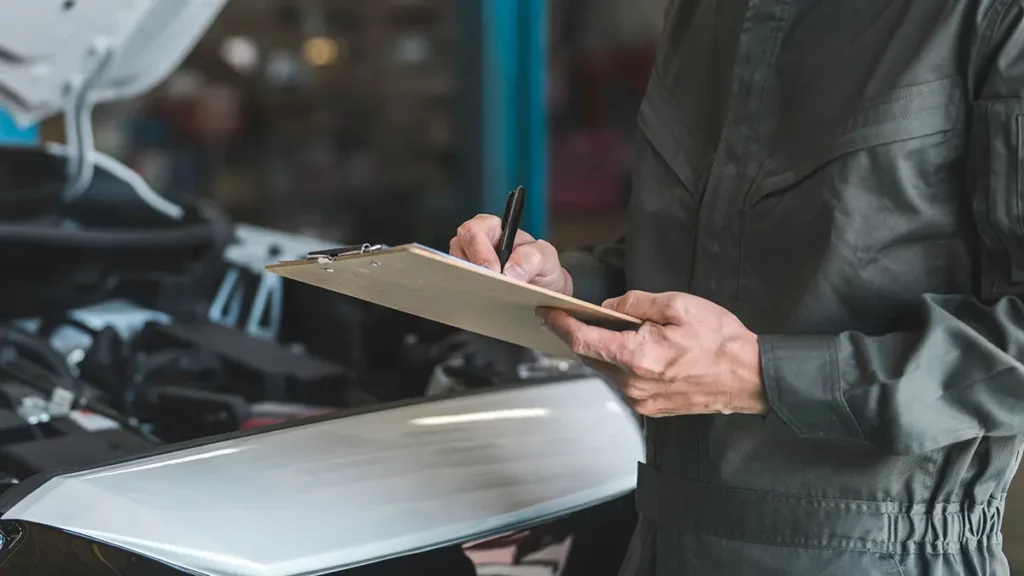Japanese Vehicle Inspection (Shaken)

Introduction
In Japan, under the Road Transport Vehicle Act, it is mandatory for automobiles and motorcycles to undergo periodic inspections known as Shaken to ensure their safe operation. This system is crucial for confirming that vehicles meet safety standards and for maintaining road traffic safety. In this article, we will provide a detailed explanation of Japan’s vehicle inspection system, covering everything from its overview and procedures to costs and important considerations.
- . Japanese Vehicle Inspection (Shaken)
- 1. Introduction
- 2. What is Shaken? What is Its Purpose?
- 3. Frequency of Shaken
- 4. Procedures Required for Shaken
- 5. Where to Get Shaken
- 6. What is Required to Pass Shaken
- 7. Where Can You Get Shaken?
- 7.1. Dealerships:
- 7.2. Auto Repair Shops:
- 7.3. Specialized Shaken Centers:
- 7.4. Automotive Supply Stores:
- 7.5. Gas Stations:
- 7.6. Shaken Agents:
- 8. Laws and Regulations Related to Shaken
- 9. Details of Laws and Regulations Related to Shaken
- 10. Frequently Asked Questions About Shaken
- 11. Conclusion
What is Shaken? What is Its Purpose?
Shaken, officially called the Motor Vehicle Inspection and Registration System, is a mandatory inspection that regularly checks a vehicle's safety performance and ensures it complies with emission regulations. Not only does this system keep vehicles on the road, but more importantly, it plays a vital role in protecting both people and the environment. Consequently, Shaken serves the following purposes:
- Ensuring Road Traffic Safety:
Moreover, by preventing accidents caused by poor vehicle maintenance, Shaken helps protect the safety of not only drivers and passengers but also all road users, including pedestrians. - Environmental Protection:
By ensuring vehicles meet emission standards, Shaken contributes to reducing air pollution and preserving the global environment. - Vehicle Maintenance and Management:
Through regular inspections and maintenance, Shaken helps maintain a vehicle’s performance, promoting its safe and long-term use.
Frequency of Shaken
The frequency of Shaken inspections depends on whether the vehicle is newly registered.
- New Vehicles:
For passenger cars, the first inspection takes place three years after initial registration, followed by inspections every two years. - After the First Inspection:
Inspections take place every two years.
Procedures Required for Shaken
To undergo Shaken, the following three documents are necessary:
- Vehicle Inspection Certificate (Jidōsha Kensa-shō):
A document detailing the vehicle's registration information. - Compulsory Automobile Liability Insurance Certificate (Jibaiseki Hoken Shōmeisho):
Proof of mandatory insurance designed to compensate victims of traffic accidents. - Automobile Tax Payment Certificate (Jidōsha-zei Nōzei Shōmeisho):
A document that verifies payment of the automobile tax.
Where to Get Shaken
There are three primary locations where you can have your Shaken inspection conducted:
- Transport Bureau (Unyu Shikyoku):
Official inspection agencies overseen by the Ministry of Land, Infrastructure, Transport, and Tourism. - Light Motor Vehicle Inspection Organization (Kei Jidōsha Kensa Kyōkai):
An organization responsible for inspecting light vehicles (kei cars). - Designated Private Garages (Shitei Kōjō):
Private garages authorized by the Transport Bureau to carry out inspections.
What is Required to Pass Shaken

To pass Shaken, your vehicle needs to meet the established safety standards. These standards aim to ensure both vehicle safety and environmental protection. The inspection typically checks the following areas:
- Brakes:
Checks include whether the braking power meets standard values and the wear condition of the brake pads. - Tires:
Inspectors check the depth of the treads, look for cracks, and identify any visible damage. Tire wear significantly affects braking distance and driving stability. - Lights:
The functionality of headlights, tail lamps, and turn signals is verified, including the alignment of the headlights. Proper lighting is essential for visibility during nighttime or adverse weather conditions. - Exhaust Emissions:
The vehicle must emit harmful substances within regulated limits. This plays a crucial role in protecting the environment.
Other Components:
Inspectors also check the condition of seat belts, the steering wheel, windows, and other essential equipment necessary for safe driving.
Where Can You Get Shaken?
There are several options available for undergoing Shaken in Japan, each offering different levels of service, cost, and convenience.
Dealerships:
Authorized dealerships employ mechanics who specialize in their specific brand of vehicles. They offer comprehensive maintenance and inspection services, but the costs usually run higher compared to other options.
Auto Repair Shops:
These shops perform general repairs and maintenance and usually charge less than dealerships. They service a wide range of car models. Auto repair shops fall into two categories:
- Designated Garages (Shitei Kōjō):
The Transport Bureau or the Light Motor Vehicle Inspection Organization authorizes these private garages to conduct Shaken inspections. Their facilities match those of official inspection centers, enabling them to manage maintenance, repairs, and inspections all in-house. - Certified Garages (Ninshō Kōjō):
These garages can perform repairs and maintenance but lack the equipment to conduct the inspection itself. Therefore, they must take the vehicle to an official inspection center for the actual Shaken process.
Specialized Shaken Centers:
These shops specialize exclusively in Shaken inspections and usually operate as designated garages. They provide quick and cost-effective services, sometimes completing inspections in under an hour. However, to save time and money, they perform only the minimum required maintenance and typically leave out preventive repairs unless customers specifically request them.
Automotive Supply Stores:
Stores that sell tires, oils, and other car accessories often offer Shaken services. They provide a casual, approachable environment where customers can consult with staff about the inspection. You can choose replacement parts based on your preferences, and membership discounts or warranties are often available. However, not all stores offer Shaken, so it’s important to confirm beforehand.
Gas Stations:
Many gas stations now offer Shaken services in addition to fuel and car washes. The key advantage is convenience—you can schedule appointments or request estimates while refueling. Some stations even accept reservations 24/7, making it easy for busy individuals to manage their inspections. Certain stations may offer unique perks, such as discounts on fuel or complimentary car washes. However, the quality of maintenance and services can vary, so choosing a reputable station is important. Also, if the station lacks an in-house repair facility, the inspection may take longer, requiring careful scheduling.
Shaken Agents:
These agents handle the paperwork and procedures for Shaken on behalf of the car owner, typically when using the User Shaken (DIY inspection) option. They manage vehicle pick-up and drop-off, reservation procedures, and transport to the inspection center. This option minimizes costs, as you only pay for the legal inspection fees and the agent’s service fee. However, agents only handle the inspection process—they do not perform repairs or maintenance. If your vehicle fails the inspection, you will need to address the necessary repairs yourself.Each option offers a balance between cost, convenience, and thoroughness. Choosing the right place for Shaken depends on your budget, the condition of your vehicle, and how much time you can dedicate to the process.
Laws and Regulations Related to Shaken
The Road Transport Vehicle Act (Dōro Unsō Sha-ryō Hō) governs Shaken inspections. This law defines which vehicles require inspection, how often to inspect them, what items to check, and the safety standards vehicles must meet.
Details of Laws and Regulations Related to Shaken
The Road Transport Vehicle Act sets standards for the structure, equipment, and performance of vehicles to ensure road safety and protect the environment. This law mandates that vehicles undergo Shaken at specified intervals to confirm they meet safety standards.
These safety standards cover a wide range of criteria, including:
- Vehicle Safety Performance:
Regulations on brakes, lights, and other critical safety components. - Emissions Standards:
Limits on exhaust gases to control pollution. - Noise Regulations:
Restrictions on the permissible noise levels from vehicles.
Frequently Asked Questions About Shaken
-
What happens if my Shaken expires?
-
Driving on public roads with an expired Shaken is a violation of the Road Transport Vehicle Act and will result in penalties. Additionally, your compulsory automobile liability insurance (Jibaiseki Hoken) becomes invalid, meaning you will be personally responsible for any damages in the event of an accident.
-
Can I perform maintenance on my vehicle before Shaken?
-
Yes, you can perform maintenance yourself. However, doing so may require specialized knowledge and skills, and improper maintenance can increase the risk of accidents.
Conclusion
Japan's Shaken system plays a crucial role in ensuring road traffic safety, protecting the environment, and maintaining vehicle performance. When undergoing Shaken, it’s essential to understand the required procedures, associated costs, and key considerations.Shaken is indispensable for the safe and responsible ownership of a vehicle. By conducting regular maintenance and undergoing proper inspections, drivers fulfill their responsibilities and contribute to the safety of Japan’s roads.

Are you searching for the most reliable, efficient, and hassle-free way to import cars from Japan?
Partner with us and enjoy smooth, stress-free results!
- Absolutely FREE to get started
- Browse at your leisure
- Your information is 100% secure
no fees, no spam, just smooth car imports!


